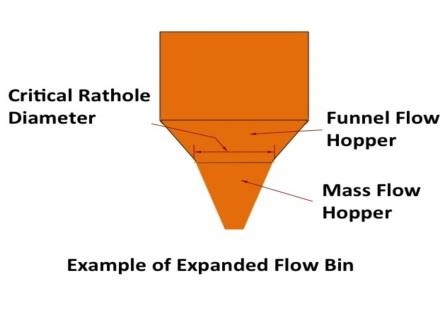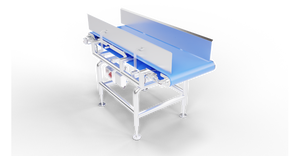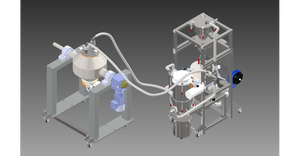September 22, 2014

This issue focuses on storage of powders. When handling powders, we always need to remember the following: material flow properties need to be determined; proper designs are required to ensure reliable flow; feeder design is as important as the silo design.
With all the information available to us nowadays, most of us know that there are two major flow patterns that can develop in a silo: funnel flow and mass flow. The definition of funnel flow is: some material moves while most material remains stationary or stagnant. This type of flow pattern occurs because of shallow and/or rough hopper wall surfaces. Funnel flow typically results in ratholing, erratic flow, segregation, and flooding. Mass flow develops when all the material in a silo is in motion whenever any is withdrawn. In this case, the hopper walls are steep and smooth enough to ensure flow along them. This type of flow pattern is indicative of uniform, first-in-first-out flow, where ratholing, erratic flow, segregation, and flooding problems are mitigated.
What is Expanded Flow?
Expanded flow takes advantage of the best features of funnel flow and mass flow. The major advantage of funnel flow is the fact that it requires low headroom; i.e. shallow cones, and even flat bottoms. Mass flow, on the other hand, provides uniform, reliable, non-segregated, flow. An expanded flow design requires an upper funnel flow section and a lower mass flow section. The mass flow pattern created by the lower hopper expands into the upper funnel flow portion, creating a useful, yet efficient flow pattern.
How Should You Design an Expanded-Flow Bin?
First, you need to know your material flow properties. The reason being is that you are going to design a funnel-flow bin and a mass-flow bin combination. The upper portion of our expanded-flow bin will exhibit a funnel flow pattern and unfortunately be prone to ratholing unless we know the critical rathole diameter of the material to be handled. This is determined by flow properties tests, which can predict the opening size required to render a rathole unstable and promote flow. For example, if your rathole dimension is 6 ft, then an opening greater than 6 ft will result in an unstable rathole. However, keep in mind that the material will still flow in funnel flow, but not rathole.
A mass-flow hopper is attached at the properly sized outlet of your funnel-flow hopper. Obviously, the mass-flow hopper design (opening size, wall angles, etc.) is set by your flow properties tests, as was the funnel-flow design. A conical or slotted configuration can be used to provide the mass-flow pattern.
One thing to keep in mine is that the upper funnel flow hopper is just that: funnel flow and subject to stagnant material remaining on the walls. This material has to be periodically cleaned off by lowering the product level to the top of the mass flow hopper.
Finally, it is not practical to use an expanded-flow design for bin diameters less than 25 ft, as it is not cost effective. It is just more practical to use mass flow for these diameters. Also, as I always say, the feeder design at the outlet of the mass flow portion must withdraw material over its entire outlet cross-section. If not, you have gone to great lengths to create another funnel-flow bin!
Joseph Marinelli is a consulting engineer and president of Solids Handling Technologies. He has been providing testing and consulting services since 1972. As a former consultant with Jenike & Johanson Inc., he has years of experience testing powders and designing bins and feeders for reliable flow.
For related articles, news, and equipment reviews, visit our Storage Equipment Zone
You May Also Like


